As part of my research for the blog, Rendezvous with the Gestapo (click here to read the blog), I read a fascinating book called Shot Down. It was written by Steve Snyder whose father, Howard, was a B-17 pilot who parachuted into Belgium after his plane was shot down on 8 February 1944. What made Howard’s story so extraordinary was that unlike most of the surviving downed Allied airmen, Howard did not make it back to London nor was he captured. Capt. Snyder decided to join the French guerilla résistants known as the maquisards, or “maquis.” He fought alongside these French resistance fighters until early September 1944 when Snyder and his maquis unit hooked up with Gen. Patton’s 3rd Army in Trélon, France.
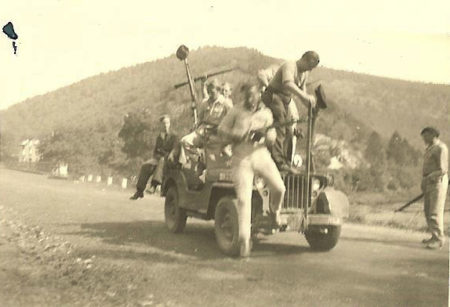
With that background, you will shortly understand why I found the story of Pfc. Weiss so interesting and why I decided to share it with you today.
Click here to watch the video Shot Down: Howard Snyder and the B-17 Susan Roth.
Did You Know?
Did you know that Hitler ordered food rationing in Berlin almost immediately after invading Poland? As you can imagine, a black market quickly developed. Senior Nazi officials including Wilhelm Frick, Walther von Brauchitsch, and Erich Raeder were involved in and profited from the black market. Although the Nazi hierarchy was required to abide by the rules, most of them scorned Hitler’s orders.
Horcher’s Restaurant was a favorite haunt of Hermann Göring, Joseph Goebbels, and other Nazi bigwigs. Ration coupons at this restaurant were non-existent. The Nazi regime protected Horcher’s and its staff (the men were exempt from the draft). There was always enough high-quality food to satisfy the clients. In 1943, the restaurant was threatened with closure but Göring had it re-opened as a Luftwaffe private club. (With Göring’s assistance, Otto Horcher moved his restaurant in 1943 to Madrid, Spain where it is owned and operated today by his granddaughter, Elisabeth Horcher.)
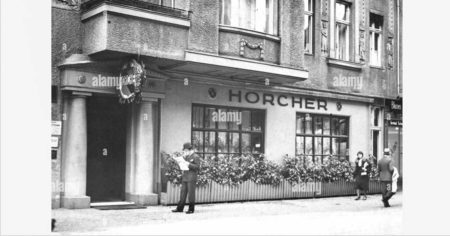
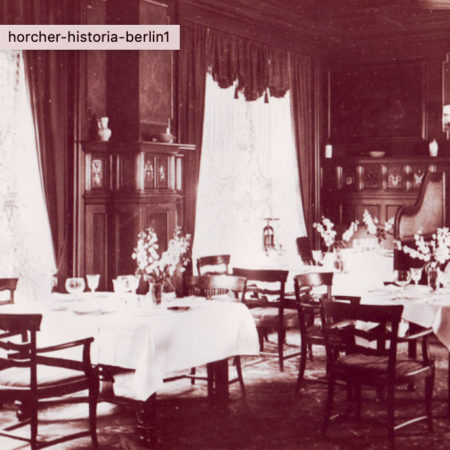
On Schloßstraße in the southern Berlin suburb of Steglitz, August Nöthling ran his delicatessen and his catering list included almost all of Berlin’s elite Nazis. Like Horcher’s, clients’ ration coupons were never required. Nöthling once sent 25 pounds of chocolates, 120 kilos of poultry (260 pounds), and 50 kilos of game (110 pounds) to the home of Interior Minister Wilhelm Frick. When the invasion of the Soviet Union began to go against the Germans, Hitler ordered all consumption to decrease. Nöthling thought that wouldn’t apply to him but he was wrong. A scandal erupted when the public found out senior Nazi officials were skirting the law. Nöthling’s Nazi clientele did nothing to save his neck. He was arrested and the investigation concluded that Nöthling caused “considerable damage” to public morale, the belief in justice, and order in the Third Reich. The Berlin police chief, Wolf-Heinrich Graf von Helldorff, ran both the investigation and prosecution despite having been one of Nöthling’s best clients. Convicted, Nöthling committed suicide while in prison. None of Nöthling’s customers were affected and the scandal blew over.
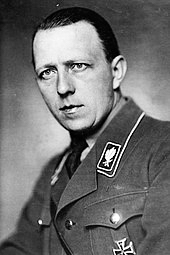
As I’ve said, “There are always two sets of rules: one set for those who make the rules and one set for the rest of us.”
Operation Dragoon
Operation Dragoon was the code name for the August 1944 Allied invasion of Provence in southern France. The invasion was originally scheduled to coincide with the Normandy invasion on 6 June 1944. However, there wasn’t enough equipment or other resources to support a separate but simultaneous invasion.
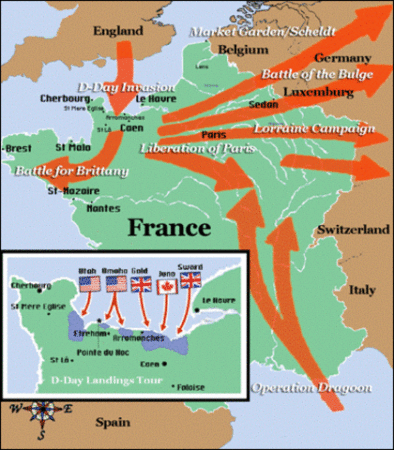
The two primary goals of the invasion were to obtain vital supply ports on the French Mediterranean coast and create a second front against the Germans. Using superior Allied air support and aided by the French Resistance (the maquis), American forces along with French Army B defeated severely depleted German forces. As the Germans withdrew to the Vosges Mountain region, the French were able to liberate the ports of Marseille and Toulon. After four weeks, Operation Dragoon was considered a success with Southern France having been liberated as well as securing several important ports that helped alleviate supply problems for the Allied troops after their breakout from the Normandy region.
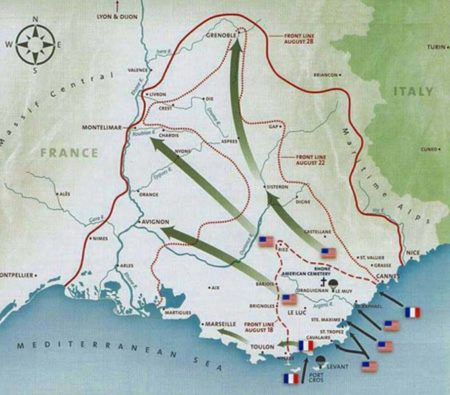
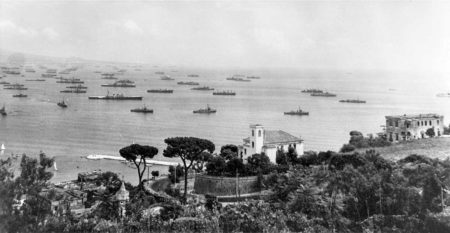
Click here to watch the video Operation Dragoon: Invasion of Southern France WWII.
Enlistment
Stephen J. Weiss (1925−2020) was born in Brooklyn, New York. His mother was a seamstress, and his father was a bodyguard. At the age of seventeen and immediately upon graduating from Lafayette high school in 1942, Weiss enlisted in the U.S. Army. He preferred to serve in a psychological warfare unit (click here to read the blog, The Ritchie Boys) but was assigned as first scout in a rifle squad with the 143rd Infantry, 36th Infantry Division (the “Texas” or “Lone Star” division).
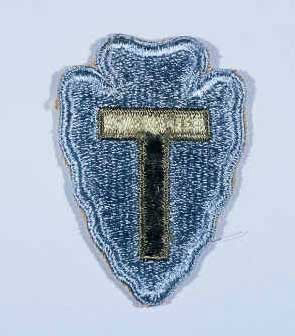
In early 1943, Pfc. Weiss and his rifle squad deployed to Algeria, North Africa where the men trained in Morocco. After being left out of some major battles, the 143rd became the first American unit to fight the Germans and Italians on the European mainland when it engaged enemy forces at the Battle of Salerno in 1943. Resistance was heavy but Weiss and his unit fought their way up the peninsula of Italy. They fought in battles such as San Pietro and Monte Cassino. After participating in the Italian campaign, the squad began preparing for Operation Dragoon. On 15 August 1944, Weiss and the 143rd landed on the shores near Saint-Raphaël in Southern France and began to move inland. A week later, they liberated the town of Grenoble. Nine days after landing, Weiss was in the Rhône Valley fighting the Germans who were entrenched.
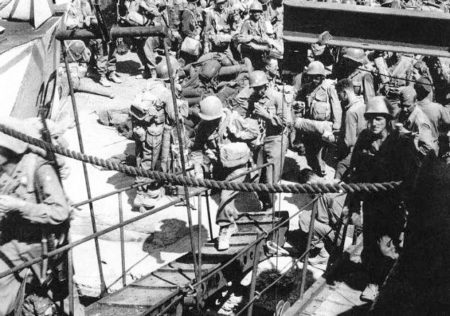
Separation
The fighting was fierce in the Ardèche region and Pfc. Weiss along with seven other soldiers became separated from their retreating unit. Lying low in a ditch that evening, the soldiers fled to Gaston Reynaud’s farm the next morning where they were given shelter in the barn. Wearing French police uniforms, the eight American soldiers crossed enemy lines and managed to meet up with the local maquis. Weiss met François Binoche (1911−1997), a one-armed French Foreign Legion officer who led the resistance fighters in the area. (In March 1945, Gen. de Gaulle named Binoche as a Companion of the Liberation and during the mid-1960s, Gen. Binoche served as the commander for the French sector of Berlin.) For a week, Weiss fought alongside Binoche and the maquis as they harassed retreating German forces.
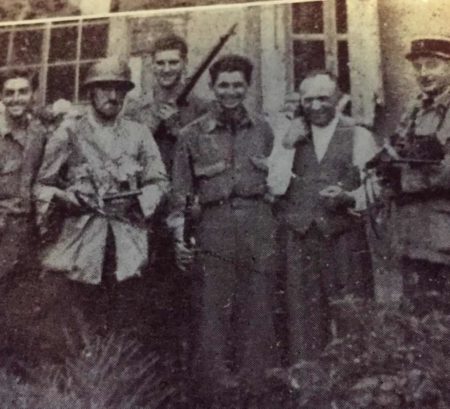
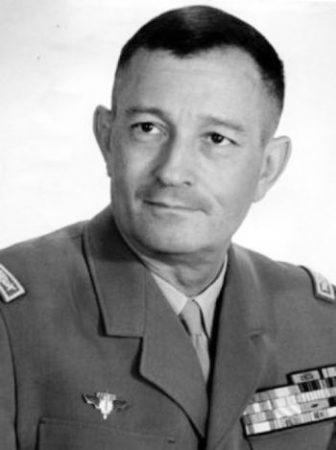
Pfc. Weiss left Binoche in September and joined up with the recently airdropped Office of Strategic Services (OSS) Operational Group (OG) “Louise,” led by Lt. Roy Rickerson (1918−2001) and Lt. W.H. McKenzie III. During this time, Weiss assisted in cutting telephone lines, recovering airdrop supplies, destroying bridges, and guarding OSS radio operators. OG Louise adopted the same guerilla tactics used by the maquis and Weiss volunteered to stay with the unit. Pfc. Weiss was listed as “Missing in Action” the entire time he was fighting behind enemy lines with the maquis and the OSS. Eventually, Weiss was “found” and ordered to rejoin his original unit.
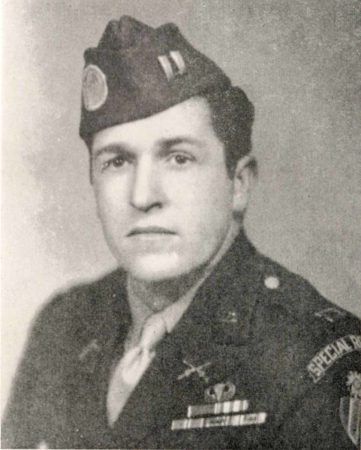
Click here to watch the video Men of the Maquis (1944).
AWOL and Court-Martial
After returning, Pfc. Weiss left his unit twice without permission. He was suffering from anxiety and depression⏤what we know today as post-traumatic stress syndrome (PTSD). Weiss was eventually located, arrested, and thrown into an army jail.
On 7 November 1944, nineteen-year-old Pfc. Stephen Weiss was tried for desertion. Capt. John Stafford, Trial Judge Advocate, oversaw the court and the fifteen officers who would determine the private’s fate. Unfortunately, Weiss’s attorney failed to prove “no real intent” and his client was found guilty. Stephen Weiss was sentenced to life imprisonment at hard labor.
Luckily, the army eventually determined a mistake had been made. In April 1945, Weiss was interviewed by an army psychiatrist and told the young soldier a recommendation would be made to drop all charges and to have him reassigned to a non-combat position. Pfc. Weiss became an army photographer.
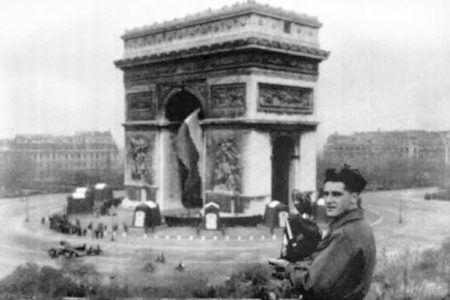
Post War
Stephen Weiss went to college after the end of the war. He obtained two master’s degrees, the first in Clinical Psychology from Goddard College in Vermont and the second in War Studies from Kings College in London. He stayed in London and earned his doctorate in War Studies from Kings in 1995.
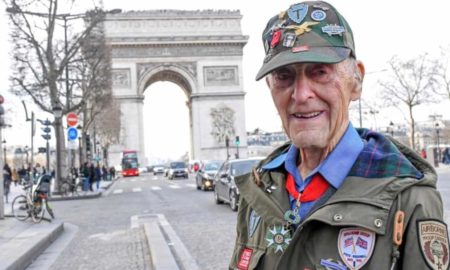
Returning to America, Dr. Weiss worked as a licensed California clinical psychotherapist. He spent more than thirty years working in the network broadcast television business, particularly with CBS. In his later years, Dr. Weiss became a military expert and authored two books while maintaining a schedule as a popular lecturer.
The former soldier struggled with integration back into civilian life as he continued to suffer from PTSD. Throughout his post-war career, Dr. Weiss conducted research on PTSD with a group of World War II veterans and many of his other research projects focused on the psychology of soldiers.
Dr. Weiss was awarded the U.S. Bronze Star in addition to the French honors of the Medal of Resistance and two Croix de Guerre. Recognizing Dr. Weiss’s valor in guerilla fighting, President Jacques Chirac awarded him the designation as a knight of the Légion d’honneur in 1999, then an officer in 2007, and finally in 2013, Dr. Weiss was honored by the French president with a promotion to commander.
“My generation is disappearing at an accelerated rate, and I, with all humility, remain almost alone to present and explain the life of the combat soldier. I believe that after a lifetime of researching and writing, a realistic story of the fighting man has emerged.”
⏤ Dr. Stephen J. Weiss
According to his family, Steve was fond of saying, “We’ll meet again.”
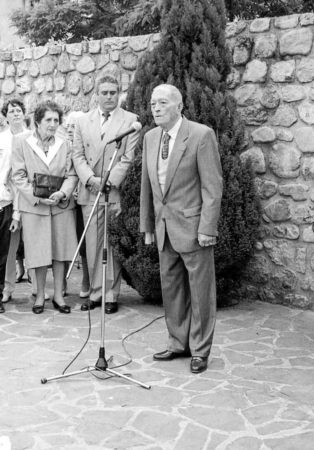
Next Blog: “Les Bleus, Le Collabo et l’Exécution”
Correspondence and Commentary Policy
We welcome everyone to contact us either directly or through the individual blogs. Sandy and I review every piece of correspondence before it is approved to be published on the blog site. Our policy is to accept and publish comments that do not project hate, political, religious stances, or an attempt to solicit business (yeah, believe it or not, we do get that kind of stuff). Like many bloggers, we receive quite a bit of what is considered “Spam.” Those e-mails are immediately rejected without discussion.
Our blogs are written to inform our readers about history. We want to ensure discussions are kept within the boundary of historical facts and context without personal bias or prejudice.
We average about one e-mail every two days from our readers. We appreciate all communication because in many cases, it has led to friendships around the world.
★ Learn More About PFC. Stephen Weiss ★
Snyder, Steve. Shot Down: The true story of pilot Howard Snyder and the crew of the B-17 “Susan Ruth.” Seal Beach, CA: Sea Breeze Publishing, LLC, 2015.
Weiss, Steve. Allies in Conflict: Anglo-American Strategic Negotiations, 193844. New York: St. Martin’s Press, Inc., 1996. In association with King’s College, London.
Weiss, Stephen J. Second Chance: In Combat with the US “Texas” Infantry, the OSS, and the French Resistance During the Liberation of France, 1943−1946. Essex, U.K.: Military History Publishing, 2011.
Disclaimer:
There may be a chance that after we publish this particular blog, the video links associated with the blog are no longer accessible. We have no control over this. Many times, whoever posts the video has done so without the consent of the video’s owner. In some cases, it is likely that the content is deemed unsuitable by YouTube. We apologize if you have tried to access the link and you don’t get the expected results. Same goes for internet links.
What’s New With Sandy and Stew?
I’m writing this blog about two weeks after our guest, Ian, hit our town of Punta Gorda and Southwest Florida. All our services have been restored except cable and internet. The mobilization of first responders has been phenomenal! Thousands of trucks and men and women descended on our community from all over our state and the country within 24-hours of the storm moving out. The coordination of these efforts at all levels has been remarkable. Kudos to the first responders, the organizers, the politicians, and the community for its response to those in need.
So, Sandy and I are no longer “Hurricane Virgins.” (We didn’t live here when Charley came through sixteen years ago and we were in Europe when Irma came through five years ago.) We decided not to evacuate and are now entitled to wear the Ian badge of honor and boast of our fortitude (some would say “stupidity”) in a category four hurricane (darn near a category five). Considering the widespread destruction, I suspect they may retire Ian’s name. We have experienced two of the big three: earthquakes, hurricanes, but no tornadoes.
Many thanks to those of you who sent us messages inquiring about our status. We appreciated that very much. Our small community of Punta Gorda Isles and in particular, Sandy and I, were very lucky. Our damage was limited primarily to vegetation (i.e., trees) and we escaped any serious structural issues. Unfortunately, I can’t say the same for so many people who were hit the hardest. I think we benefited from the eye of the hurricane going directly over us, sparing us from the extreme winds of the eyewall (that is what destroyed Fort Myers and the barrier islands).
Thank you to all of you who subscribe to our bi-weekly blogs. It seems there isn’t a day that goes by where we don’t increase our readership. Please let your history buff friends and family members know about our blog site and blogs.
Someone Is Commenting On Our Blogs
I’d like to thank several people who reached out to us with comments. First, thanks to J. Rose H. for contacting us regarding the blog, He Led from the Front (click here to read the blog). Rose’s father was a soldier who served under Maj. Gen. Maurice Rose.
Patrick C. had a comment concerning our 2017 blog, The Good Nazi (click here to read the blog). Patrick said, “Speer was never a good Nazi.” The title and subject matter seemed to get a lot of passionate responses. You are all correct. Albert Speer was not “a good Nazi,” and many historians believe he should have been hanged with the rest of the senior Nazis (to which I would agree). It was likely the greatest con job of a criminal defendant during the post war judicial proceedings. The title “The Good Nazi” given to Speer during the Nuremberg Trial was coined by the American press.
If there is a topic you’d like to see a blog written about, please don’t hesitate to contact me. I love hearing from you so keep those comments coming.
Share This:
Follow Stew:
Find Stew’s books on Amazon and Apple Books.
Please note that we do not and will not take compensation from individuals or companies mentioned or promoted in the blogs.
 Walks Through History
Walks Through History
Copyright © 2022 Stew Ross


Thanks, Stew! Much appreciated.
Always happy to feature your father. STEW
Another terrific job Stew. I’ve been keeping this blog post for several weeks until I read it this morning 11/9. The Steve Snyder video really hit home with me as the son of a B-17 crewmember who was shot down and survived. Thanks for including it. I intend to track down the book “Shot Down” and read it.
The Pfc. Weiss WWII story was equally amazing. They don’t make men like these guys anymore. I’m proud to have known some them myself. Cheers. Greg.
Thanks Greg. I think you will really enjoy Steve’s book, “Shot Down.” This is why they are called “The Greatest Generation.” STEW
Hi Stew, I have read two out of the three the third books to be expensive to me both books are a great read. Is there any books about Milice that you know of? I read there was 30,000 executed after the war it’s a shame there wasn’t many more of them scumbags. As usual another great read from you Stew I look forward to them coming.Take care.
Hi David, good to hear from you again. Thirty thousand represent the total number of men in the Milice. Many were executed after the liberation but I’ve not come across an estimated number. Historians think 10,000 people were executed for collaboration shortly after liberation, many of them were Milice. The two books by Weiss are out of print and I suspect that is why they are expensive. STEW